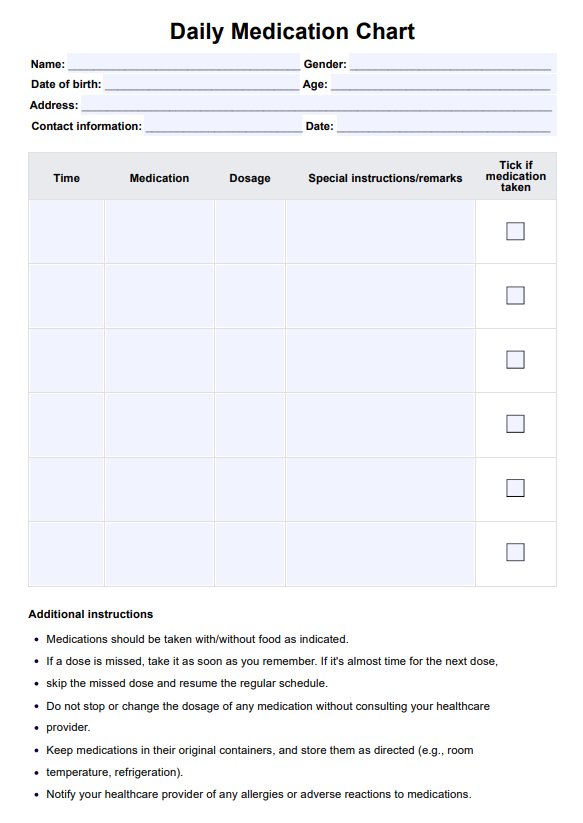Start by outlining the necessary details, such as the patient's personal information, medication names, dosages, and timing. Present in a tabular format and consider including spaces for additional notes to facilitate easy understanding and use for patients.

Daily Medication Chart
Help patients track and manage their medication with our free Daily Medication Chart template.
Use Template
Daily Medication Chart Template
Commonly asked questions
It is generally used in healthcare to assist individuals in managing their medication regimens and promote adherence.
Patients fill in specific details about themselves and their medications. This is a daily reference and checklist to maintain their health.
EHR and practice management software
Get started for free
*No credit card required
Free
$0/usd
Unlimited clients
Telehealth
1GB of storage
Client portal text
Automated billing and online payments











